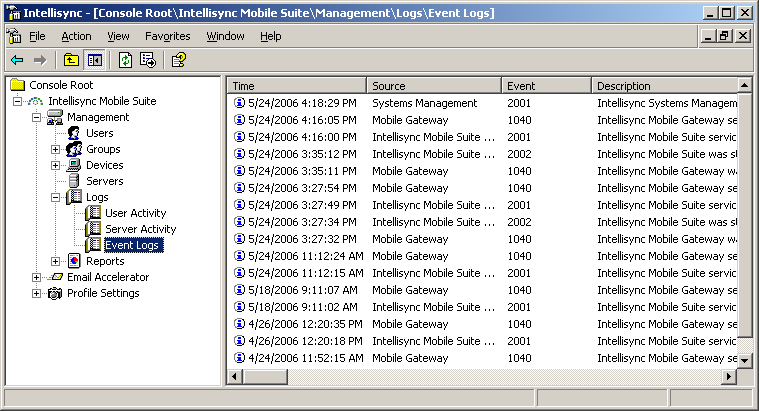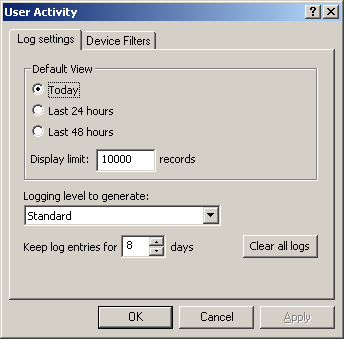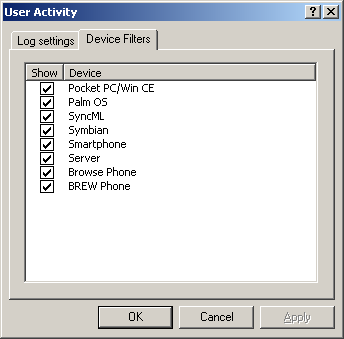3.6 Logs
Logs allow you to view historical information about your system. For user and server activity logs, you can select the date and time ranges you want to view.
-
From the console tree, click > .
-
Select the type of log you want to view. The log information appears in the details pane.

3.6.1 Log Levels
You can select the level of log entries you want to view. Select from the following levels.
- Minimum. Shows only warnings and error messages.
- Standard. Shows general information messages and minor warnings, in addition to serious warnings and error messages.
- Verbose. Shows all log messages.
NOTE:For the User Activity summary, you can view only the message detail level you elected to capture from the client users (or a less selective level). For example, if client logging is set to Standard, Verbose messages are not captured.
3.6.2 Changing Log Defaults and Settings
The User Activity and Server Activity logs include a Settings button to change the default view or to set how long you want to keep log entries in the system.
The following figure shows the Log settings panel on the User Activity Settings dialog box.
Figure 3-4 Sample Log Settings

The following figure shows the Device Filters panel on the User Activity Settings dialog box.
Figure 3-5 Sample Device Filter Settings

The values you can set are different depending on which log you are viewing. For more information on log settings, refer to the online help.
3.6.3 Available logs
The following logs are available:
-
User Activity: Displays connection information on a user-by-user basis. You can select the user, start date, end date, and time.
-
Server Activity: Displays server activity for the start date, end date, and time you specify. Unlike the Event Logs, which display log entries for the computer you choose, the Server Summary displays log entries for the entire system.
-
Event Logs: Mirrors the contents of the Windows NT Event Log for the Intellisync Mobile Suite server you select. You can see start and stop times for services, as well as critical error information.
For more information on logs, refer to the online help.
3.6.4 Log Files
Log files are stored in the Intellisync\Log directory (or the Synchrologic\Log directory), depending your system setup. These logs contain the same information you can view from the Intellisync Mobile Suite control. If you are having problems with your system, an Intellisync support engineer might ask you to send these files for analysis.